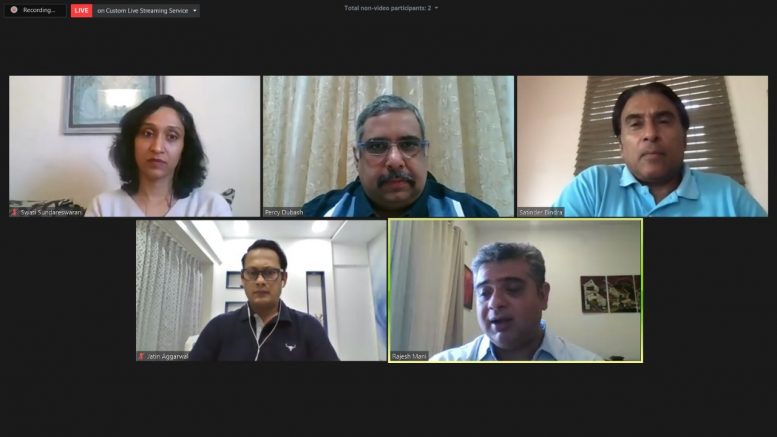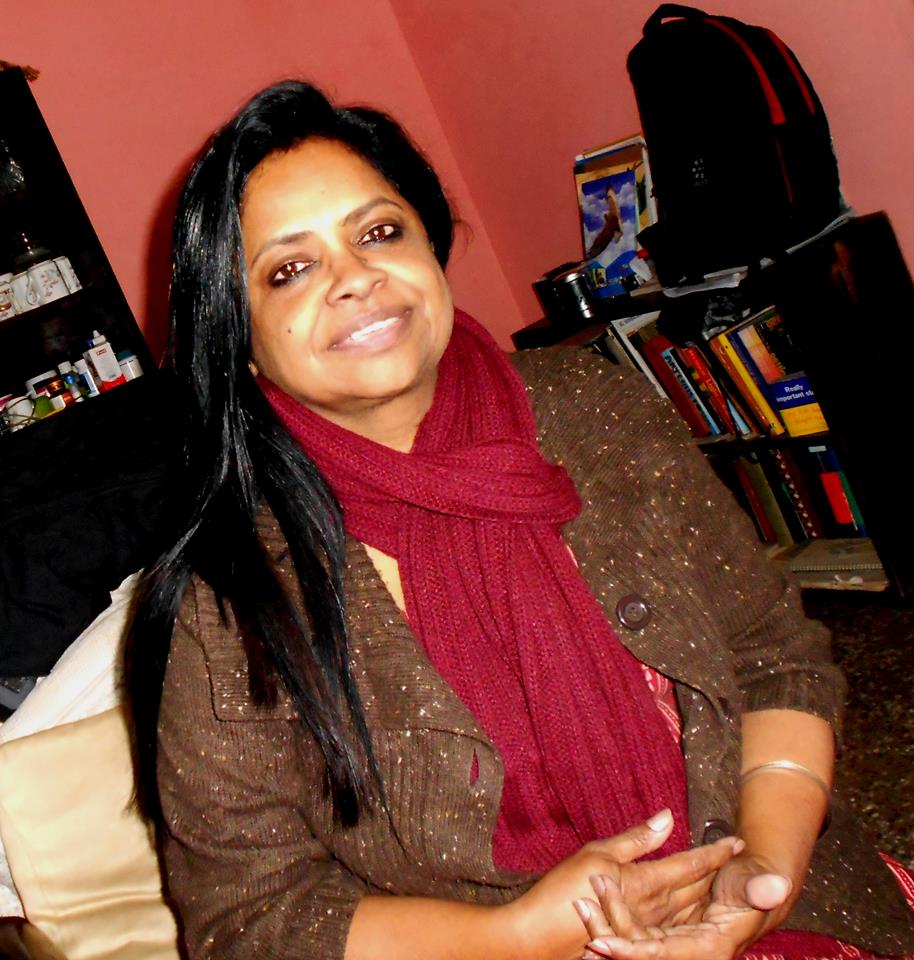The pandemic has struck, and as we deal with the unknown, several questions keep rolling in. Business sectors are trying to face them and find effective, innovative solutions. The mobility sector is also trying to work around these challenges that are totally unprecedented.
Focus on Communications in the Mobility Sector was the topic of discussion at the 5th edition of The Communicators’ Assembly Point, where communication leaders from this sector shared their views on Navigating Reputation in the Post COVID era. Diving straight into the discussion, was Percy Dubash, Director, Adfactors who was the moderator, as he highlighted that the sector has been caught in the eye of the storm, and was getting entangled in the COVID-19 scenario. The participants in the discussion were: Jatin Aggarwal, DVP & Head – Public Affairs, Communication & CSR at Groupe Renault, Rajesh Mani, Head Marketing and Corporate Communication, Ashok Leyland, Satinder Bindra, Director of Communications, India and South Asia at Uber and Swati Sundareswaran, Lead – PR & Corporate Communications, Royal Enfield.
How did communication fare?
Throwing open the discussion on the role of communication and function in the pre- and post-COVID era, the communication leaders shared their learnings too. Swati admitted that it is very manic and unprecedented and in crisis times, we need to keep our heads together. “My role hasn’t changed much, and in Corporate Communications we know we are the custodians of our brand, but these times have definitely brought more focus on PR within organisations”.
In this pursuit of endurance, the spotlight was on – willingness and optimism, said Jatin. With news coming in from all directions, at Renault, they had to decipher and connect in a positive sense. Remember, communicators are facilitators. For Ashok Leyland, the major issue was that they had to act immediately, with trucks stranded across the country. “We acted immediately and activated our service network and got the helpline number going and started engaging with them,” elaborated Rajesh. Then they realised that they had to communicate with external stakeholders too – and disclosed what contributions they were doing. And this communication has to be meaningful and earnest.
With two distinct stakeholders – drivers and riders, Uber got into action fast. “We had two distinct strands and we had to be specific in communication,” said Satinder. They had their driver app, code-named Carbon, which is a core component of the ridesharing business. Among other new features, the app lets their population of over three million driver-partners find fares, get directions, and track their earnings. To build a culture of trust, they introduced videos. Safety was the focal point which was the crux of all communication on the rider front. Immediate grants through The Ubercare Driver Fund was announced, with an Uber-funded corpus of INR 25 crore to ensure support for drivers. “We set in a lot of protocols and communicated quickly and honestly, as we were quite taken in by the volume of communication and the speed as well,” he revealed.
And how did they communicate the “We are back” message? Having launched the #LeaveHome campaign for the brand, Swati explained how they were able to change form ‘leave home’ to ‘stay home’ beautifully. Getting into devising various offers and developing a special sales taskforce for transaction with dealers at Renault, they created a full-fledged campaign for dealers – ‘Welcome back’. And, for internal stakeholders, the need to ensure employees are safe was right on top of the list. It was launch time for Ashok Leyland, as they launched their range of modular trucks – the AVTR line-up, which is India’s first modular truck platform. Consumers are looking for value, not frills, noted Rajesh.
Learnings
Every challenge has an opportunity – that was the learning in place for Jatin. And the greatest learning from Swati’s point of view is not what should be done, but – what not to do! It has opened opportunities to put out the right messages. “We wanted to focus on what is real and build an environment of trust with our community and stakeholders,” she added and specified that they tried to keep communication transparent and optimistic. The need to be extremely cautious was emphasised by Rajesh; it’s indeed a thin line, for consumers who are looking at what brands are doing and what values they stand for.
The ‘digital’ connect – the new normal?
How has customer behavior toward digital engagement changed? Is this new normal, changing the way people consume and behave?
COVID-19 had created a total switch in communication – to ‘digital’. But, will this be the new normal? Digital engagement will get wider, said Satinder outlining that they have a ‘Safer for Each Other’ campaign running very effectively, which stresses on the concept that safety can spread.
Unusual times call for unusual measures. The pandemic has forced everyone to think out of the hat, which is useful to keep customers engaged; but is it a trend? Swati was not sure. As a brand, Royal Enfield identifies with travels and journeys, and that part will not change, she affirmed – “It may take time to come back, but the consumer is shifting to a digital space”. Brands have the responsibility to engage customers and she felt that they have seen “increasing levels of engagement in the social media space”. On the same mode was Ashok Leyland – brand building through the social media platforms, as Rajesh alleged.
Digital is looming large, but we Indians are very emotional and “the touch and feel” will not go, disclosed Jatin and this was his “biggest takeaway”.
With safety and security upfront, would they prefer customers going online rather than offline, as it was the trend earlier? Stressing on the typical Indian trend of depending on the “touch and feel” element, Swati pointed out that while buying a motorcycle or SUV, we like to drive it around. “That is not going away. The correct thing is to have both options. Let the customer choose!” was the solution put forth by her.
Communicating to heighten customer loyalty
In these times of anxiety and stress, trust is not established in a week, but you have to “keep up the quantity and quality of communication” and we have to “watch out for what kind of sweet spot we hit,” asserted Satinder. Referring to the Uber Driver Fund he pointed out how a recent survey revealed the fact that 97% were of the opinion that it was a good thing. Videos sent out made a big difference too. “For trust, if you can convince the drivers and riders that you have their back – that matters!” he noted.
The tone should be empathetic, then trust and loyalty will increase,” asserted Swati. According to Rajesh, brands should be following these points – brand communication should be authentic, positive, sensitive and engage key stakeholders. If you are willing to be optimistic, you will fight issues, and the learning is to adapt, shared Jatin.
And, while designing communication – was any assistance taken from medical experts? At Royal Enfield, a family feeling prevailed and they organised townhalls, group meetings – opening up opportunities to talk openly, to ensure “happy employees”. Following international norms, referring to WHO, and even having in-house experts to ensure right messaging were what the communication leaders explained.
Plans for the festive season
The festive season normally ushers in a sales extravaganza for brands and has the whole country engaged. But 2020 would be a different scene. Is it that optimism is increasing in the weeks that loom ahead?
“We are optimistic and there is the need to spread this optimism,” said Jatin while Satinder confirmed that their safety message will continue; plus they hope ‘Uber Connects’ will come handy – a new package delivery service to connect with family and friends. The government is trying to bring back normalcy, but it’s tough to predict was Swati’s remark; from the communication point of view, what resonates with the Indian audience is the spirit of resilience which must be retained in the tone.
Besides continuing with the safety and security factors, Ashok Leyland is looking at another launch and they are going full hog!
Right time for promotional communication?
Festive season unleashes a myriad of promotional campaigns and offers. Given the current scenario, will there be a right time for promotional campaigns? “It depends on business to business and category to category, and it depends how optimistic you are of the economy,” signed off Rajesh.
The views and opinions published here belong to the author and do not necessarily reflect the views and opinions of the publisher.






Be the first to comment on "The Communicators’ Assembly Point 5: Mobility Companies"